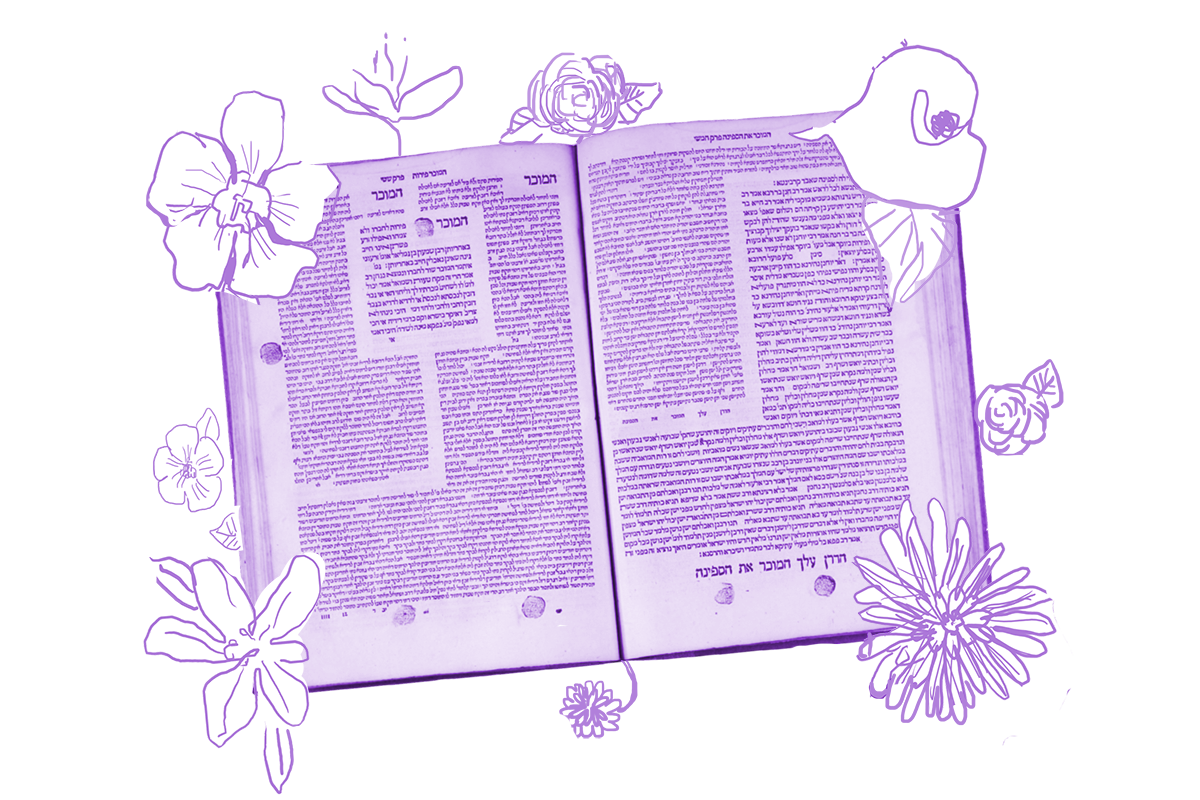A mishnah we read two days ago teaches that if Reuven has vowed not to derive benefit from Shimon, Shimon may nonetheless teach Bible to Reuven’s sons and daughters. This mishnah inspires a discussion on today’s daf about teaching Bible to children. Rather than focus on the ins and outs of the legal argument, I’d like to take a moment to consider what the text suggests about Bible education for kids in the rabbinic world.
The mishnah states explicitly that the Bible is taught to both boys and girls — an indication that Jewish women were not ignorant of their own sacred scriptures. Indeed, as Proverbs 31 (known independently as the Friday night song Eshet Hayil) reminds us, the ideal woman is one who can tend to a household and children and the family business with wisdom (which the rabbis identified with Torah) always on her lips. (Proverbs 31:26)
Here is another tradition, this time from a beraita, that helps us understand what Torah education might have looked like for young children:
Children may not read for the first time on Shabbat. However, they may review what they have already learned.
With your help, My Jewish Learning can provide endless opportunities for learning, connection and discovery.
The Gemara goes on to explain that teaching a new Torah passage for the very first time is a difficult task, which is why it is not attempted on Shabbat. Doing so would interfere with the teacher’s obligation to refrain from labor and enjoy the Sabbath day. However, reviewing a verse is permitted, because this is much simpler.
This beraita captures something about the ancient approach to teaching Torah to children. Clearly, it was not simply about reading quickly to review the primary obligations of its laws and the contours of its stories. It seems unlikely that the rabbis would have had much interest in illustrated Bible books for kids. Instead, this passage suggests, Torah was meant to be learned in small chunks that were studied over and over until they were memorized.
Those of us who may have painful memories of rote memorization — from capital cities to dates of battles — might intuit that this would have been tedious for students. And likely it was. It also might have been daunting for tutors, since there are nearly 6,000 verses in the Torah alone and 23,000 in the whole of Tanakh. And then there is all of midrash (rabbinic interpretation of Torah), halakhot (laws) and aggadah (non-legal rabbinic material, often stories) which, as the mishnah under consideration reminded us, were also part of the rabbinic curriculum.
But let’s also consider the benefits. In a world in which written books are scarce, memorization is how people store their knowledge of sacred text. But perhaps even more importantly, memorization creates a shared body of knowledge and even a shared language. By way of analogy, many people today take satisfaction in memorizing poetry, which they can recall at opportune moments. In my family, we have a penchant for memorizing movie lines, so that it is not uncommon for one of us to punctuate another’s anecdote with the remark “he’s only mostly dead” (The Princess Bride) or “walk this way” (Young Frankenstein) or “inconceivable!” (The Princess Bride, again). I’ve now certainly dated myself (or rather, my parents), but here’s the point: A shared text that is so much a part of a community that it has been memorized en masse and comes to peoples’ minds unbidden creates an intimacy — with that text and with others who similarly embody it.
Read all of Nedarim 37 on Sefaria.
This piece originally appeared in a My Jewish Learning Daf Yomi email newsletter sent on December 1st, 2022. If you are interested in receiving the newsletter, sign up here.



